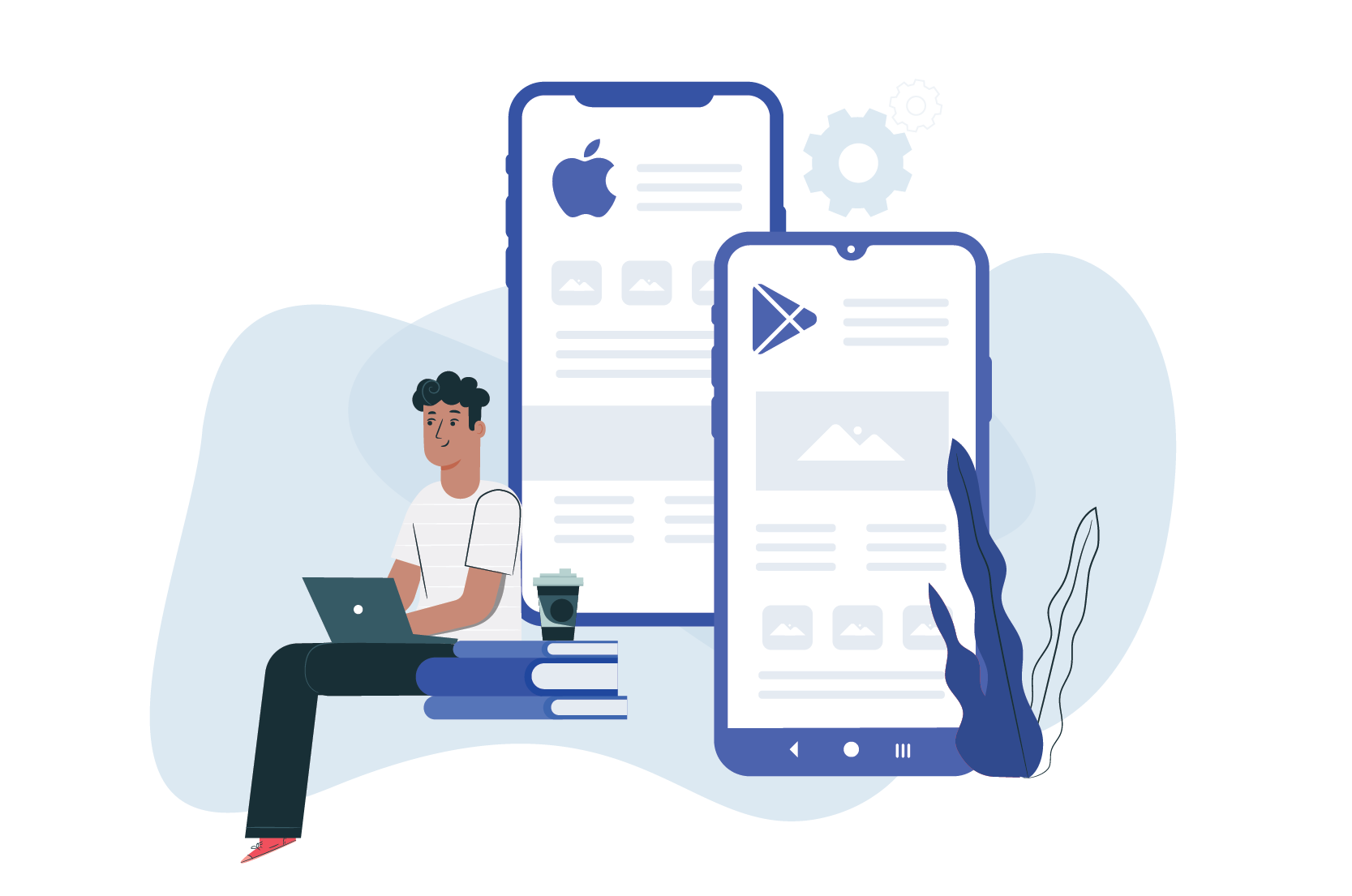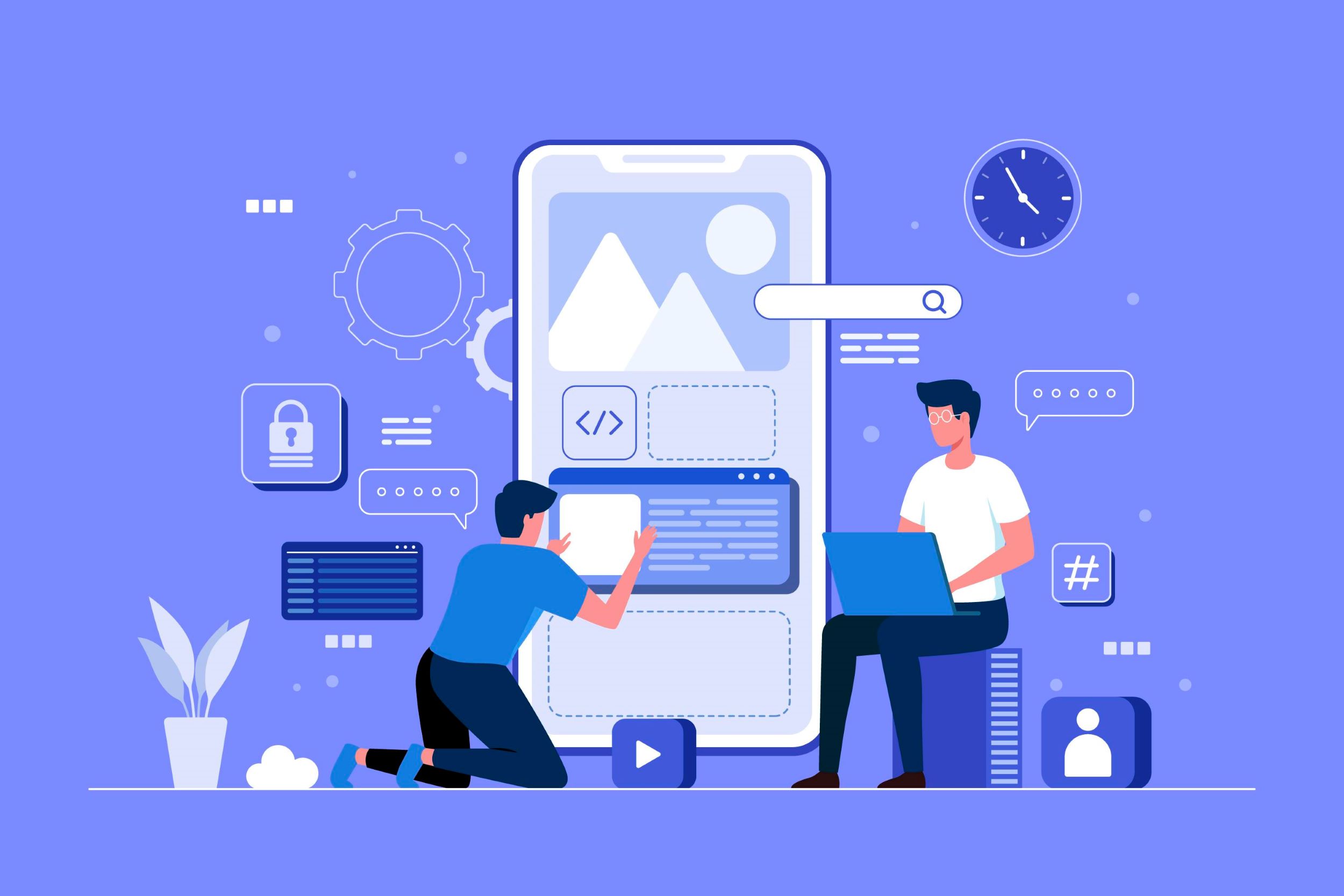The world of mobile app development is constantly evolving, with new technologies and trends shaping the way we interact with our smartphones and tablets. As businesses and individuals seek to harness the power of mobile apps to connect with users, provide services, and enhance their brand presence, the question of cost becomes a significant consideration. How much does it really cost to hire a mobile app developer? This guide aims to shed light on this complex question and provide insights into the factors that influence app development costs.
Cost Components of Hiring a Mobile App Developer
Developing a mobile app involves a variety of intricate factors that collectively contribute to the overall cost of the project. By breaking down these cost components, you can gain a clearer understanding of how different elements, including hire developer cost, impact your budget. Let’s explore each of these components in detail:
1. Developer’s Skill and Experience
The expertise and experience of the mobile app developer you hire play a significant role in determining the cost of your project. Developers with a strong track record of delivering successful apps and possessing in-demand skills tend to command higher rates. Conversely, less experienced developers or freelancers might offer more budget-friendly options. It’s important to strike a balance between the level of expertise you require and your available budget, as a skilled developer can lead to a more polished and functional app.
2. App Complexity and Features
The complexity and range of features you intend to incorporate into your app are key drivers of cost. Basic informational apps with limited functionalities will generally be less expensive to develop compared to feature-rich apps that involve advanced functionalities, real-time interactions, data synchronization, and integrations with external services. Clearly defining your app’s scope and features early on can help you estimate costs more accurately and avoid scope creep during development.
Ready to explore exciting mobile app features? Dive into our article now and discover innovative ways to captivate your users!
3. Platform (iOS, Android, Cross-Platform)
The choice of platform—iOS, Android, or both—can significantly impact costs. Developing for a single platform is generally more cost-effective compared to developing for multiple platforms simultaneously. Each platform has its own development requirements, user interface guidelines, and coding languages, which can affect the time and effort required. Alternatively, cross-platform development frameworks offer a compromise, allowing you to target multiple platforms with a single codebase, although this may come with some trade-offs in terms of performance and native capabilities.
Related Article: Advantages of Cross-Platform Development
4. Design and User Experience (UX/UI)
Investing in a well-designed user interface (UI) and providing a seamless user experience (UX) can have a substantial impact on the app’s success. High-quality design and intuitive interactions can lead to increased user engagement and positive reviews. Hiring skilled designers and UX specialists might incur higher upfront costs, but the potential benefits in terms of user satisfaction and app performance can justify the investment.
New to the design world? Our mobile app design agency can help you turn your ideas into engaging designs.
5. Backend Development
The backend of an app includes the server, databases, and application programming interfaces (APIs) that power its functionality. Complex apps requiring extensive backend development, such as those involving user accounts, data storage, and integrations with external services, may entail higher costs. The scalability, security, and performance of the backend infrastructure are crucial for a successful app and should be factored into your budget.
6. Testing and Quality Assurance
Thorough testing and quality assurance processes are vital to ensure your app functions reliably and is free from critical bugs. The cost of testing includes various stages, such as unit testing, integration testing, user acceptance testing, and performance testing. Allocating resources for testing and quality assurance helps identify and rectify issues before they impact the user experience and, ultimately, your app’s success.
7. Maintenance and Updates
After the initial launch, ongoing maintenance and updates are essential to keep your app relevant, secure, and compatible with new devices and operating system versions. Allocating a budget for post-launch maintenance ensures that you can address bugs, improve features, and adapt to changes in the mobile landscape. Ignoring maintenance can lead to a decline in user satisfaction and hinder your app’s growth potential.
Based on Indeed’s data, hiring a mobile app developer requires an annual investment of $89,000 for corporations.
Hire Developer Cost: Average Hourly and Project-Based Rates

Understanding the average rates for hiring mobile app developers is crucial for budgeting and making informed decisions. Developers’ rates can vary widely based on factors such as location, experience, platform, and project complexity. This section provides insights into the typical rates you can expect to encounter when hiring a mobile app developer. When assessing the hire developer cost, keep these factors in mind to ensure a well-balanced and cost-effective development process.
1. Global Rate Overview
Mobile app development rates vary significantly across different regions and countries around the world. In countries with a higher cost of living and greater demand for tech talent, such as the United States, Canada, and Western Europe, you can generally expect higher hourly and project-based rates. Conversely, countries with a lower cost of living, such as India, Eastern Europe, and Southeast Asia, tend to offer more competitive rates.
As of the latest available data, the global average hourly rates for mobile app development can range from $30 to $150 or more, depending on factors like expertise, location, and platform. Similarly, project-based rates can range from a few thousand dollars for simpler apps to tens of thousands of dollars for more complex and feature-rich projects.
2. Regional Rate Variations
Regional rate variations play a significant role in determining the cost of hiring a mobile app developer. Here’s a general overview of rate ranges across different regions:
- North America (e.g., USA, Canada): $80 – $150+ per hour
- Western Europe (e.g., UK, Germany, France): $70 – $120+ per hour
- Eastern Europe (e.g., Poland, Ukraine, Russia): $30 – $70+ per hour
- Asia (e.g., India, Philippines, Vietnam): $20 – $50+ per hour
- South America (e.g., Brazil, Argentina): $30 – $70+ per hour
- Africa (e.g., South Africa, Nigeria): $20 – $60+ per hour
It’s important to note that these rates are approximate and can vary based on the specific city, developer’s experience, and project requirements within each region.
How Rates Differ Based on Developer Experience
Developer experience is a key determinant of rates, and it’s important to understand how different experience levels can impact costs:
- Junior Developers: Junior developers, typically with one to two years of experience, tend to have lower hourly rates. While their rates are more budget-friendly, they may require more guidance and oversight, which can impact the overall project timeline.
- Mid-Level Developers: Developers with three to five years of experience are considered mid-level. They strike a balance between cost and expertise, offering a good combination of skill and value.
- Senior Developers: Senior developers, with five or more years of experience, command higher rates due to their deep expertise, problem-solving abilities, and ability to handle complex projects more independently.
- Specialized Experts: Developers with expertise in niche technologies or industries may command premium rates due to their specialized knowledge and ability to solve unique challenges.
When considering developer experience, it’s important to assess how the level of expertise aligns with your project’s requirements and goals. While junior developers may be more cost-effective, complex projects or those with tight deadlines may benefit from the skills and efficiency of senior developers.
Hire Developer Cost: Tips for Budget-Friendly and Quality-Centric Hiring

Developing a mobile app involves strategic decision-making to balance “hire developer cost” while ensuring the desired quality and functionality. Here are some valuable tips to help you achieve cost-effective hiring when working with a mobile app developer:
1. Defining Clear Project Requirements
Before you even start searching for a developer, it’s crucial to define clear and detailed project requirements. Clearly outline the app’s features, functionality, user experience, and technical specifications. A well-defined scope helps developers provide accurate estimates and minimizes the risk of scope creep, which can lead to increased costs and delays.
2. Balancing Cost and Quality
While it’s tempting to prioritize cost savings, remember that cutting corners on quality can lead to subpar results and additional expenses down the line. Striking the right balance between cost and quality is essential. Invest in critical areas such as design, user experience, and backend infrastructure, which can have a lasting impact on the app’s success.
Related Article: What is Full Stack Developer?
3. Exploring Open Source and Third-Party Solutions
Consider leveraging open source libraries, frameworks, and third-party solutions to expedite development and reduce costs. Open source components can save development time and effort, while third-party services can provide cost-effective solutions for tasks like payment processing, analytics, and cloud hosting.
4. Agile Development and Iterative Approach
Adopting an agile development methodology can help manage costs and ensure that the project stays on track. Break the development process into smaller, manageable iterations, allowing you to prioritize and address critical features early on. Regular communication with the development team and incremental progress updates can help identify issues and make adjustments before they escalate into costly challenges.
Want to learn more about the characteristics of Agile software development? Read our article for insights into this dynamic approach to project management!
5. Long-Term Planning for Maintenance
While focusing on the initial development phase, don’t overlook the long-term maintenance and updates that your app will require. Allocate a budget for post-launch support, bug fixes, feature enhancements, and compatibility updates. Regular maintenance ensures that your app remains functional, secure, and aligned with evolving technology trends.
Conclusion
Hiring a mobile app developer and embarking on the journey of app creation is a multifaceted endeavor that demands careful consideration of hire developer cost, quality, and long-term sustainability. Throughout this guide, we’ve explored the intricate factors that influence the cost of hiring a mobile app developer, from the skills and experience of the developers to the complexity of the app’s features and the platform it targets.
As you navigate the landscape of app development costs, it’s crucial to keep in mind that achieving the right balance between budget constraints and your app’s objectives is key. By following the tips and insights outlined in this guide, you can make well-informed decisions that lead to a cost-effective and successful app development process.
Looking to hire app developer in Singapore to work collaboratively on your app project? Our professionals have decade-long experience in building market-fit digital solutions for iOS, Android and Cross-Platforms.









